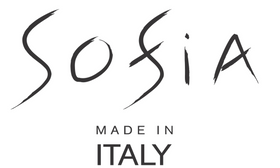World Cultural Fashion: A Tapestry of Heritage, Identity, and Style
Fashion is one of the richest reflections of culture. Across the world, clothing is not only a form of personal expression, but also a powerful symbol of history, tradition, and identity. World cultural fashion spans centuries and continents, revealing the values, beliefs, and social structures of different communities. As globalization connects people more than ever before, cultural fashion continues to inspire modern design while preserving timeless heritage.
A Mirror of Tradition:
Traditional clothing tells the story of a culture’s origins. In Japan, the kimono represents elegance and discipline, with specific patterns and colours worn for different seasons or occasions. In West Africa, brightly coloured Ankara prints express joy, lineage, and social status, often tailored into modern silhouettes that still honour ancestral roots. Indigenous communities in Mexico wear hand-embroidered huipils and rebozos, crafted with techniques passed down through generations, each symbol representing nature, spirituality, or tribal identity.
Similarly, in India, the sari remains one of the most iconic cultural garments. Worn in hundreds of regional styles, it reflects the diversity of the country and its craft traditions—whether it’s the rich gold weave of a Kanjeevaram silk or the delicate hand painted motifs of a Bengal tent. These garments remind us that fashion is a living archive of tradition.
Connecting Culture and Ceremony:
In many cultures, special clothing is an essential part of celebrations and life milestones. During Chinese New Year and weddings, people traditionally wear red qipao or cheongsam, symbolizing good luck and prosperity. In Scotland, grooms proudly wear their clan’s tartan kilt, carrying centuries of family heritage into the present. Middle Eastern cultures celebrate Eid in luxurious jalabiyas, abayas, and embroidered kaftans, often made from silk or satin and adorned with gold thread.
These ceremonial clothes are not only beautiful, but deeply meaningful. They connect past and present, offering a sense of continuity, belonging, and pride.
Modern Interpretations and Global Influence:
While cultural fashion is rooted in tradition, it constantly evolves. Designers around the world are putting a contemporary spin on heritage garments—creating fusion styles that combine traditional aesthetics with modern cuts and materials. Korean designers reinterpret the hanbok into sleek, minimal silhouettes; Moroccan caftans are reinvented with bold prints and lighter fabrics; African designers blend Ankara with Western tailoring for fresh, modern looks.
Global fashion has also adopted cultural elements in everyday wear—from Japanese kimono-style wraps to Indian block prints and Mexican embroidery on Western garments. When done respectfully and with acknowledgment, this exchange can promote cross-cultural appreciation and keep traditional crafts alive in modern wardrobes.
Preservation and Respect:
As cultural fashion continues to inspire the global industry, awareness about cultural appropriation versus cultural appreciation has become increasingly important. Respectful use of cultural symbols involves understanding their significance and giving credit to the communities that created them. Supporting artisan brands and collaborating directly with traditional craftspeople allows fashion to become a form of cultural preservation rather than exploitation.
World cultural fashion is a powerful fusion of art, history, and identity. It celebrates the uniqueness of different communities while reminding us of our shared human desire to express who we are. In today’s interconnected world, understanding and appreciating cultural fashion offers an inspiring way to learn, connect, and celebrate diversity—one garment at a time.










